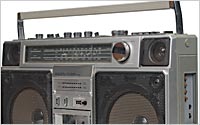
The next few years will not revitalize the stagnant radio industry, according to Fitch Ratings, which sees annual revenue declines in the
1%-2% range. However, the company’s analysis holds out hope for digital revenue growth in the long term.
In the near term, radio faces a number of threats in the evolving media
landscape. Most prominently, Fitch warned that “new Internet and mobile entrants will reduce time spent listening” at a rate of 3% to 4% per year.
Moreover, while traditional
radio broadcasters’ digital initiatives could capture “a sizable portion of digital listening,” Fitch does not expect their digital efforts to produce significant revenue for
another year or two.
advertisement
advertisement
Still, Fitch cited some reasons for optimism, noting that radio’s “audience reach should not decline substantially,” and predicting that advertiser
demand will remain, “given the large core audience, the medium’s local reach, its targeted nature, and its low cost.”
Digital competitors face significant hurdles to
achieving a size and scale that will allow them to present serious competition to radio. Assuming that the overall economic situation does not decline, Fitch predicts radio ad pricing to increase
at the rate of 1%-2% per year.
Fitch noted that radio has a couple of advantages as it attempts to transition to digital. Most notably, continuing high profit margins mean radio broadcasters
will have the funds to invest in digital platforms, even if lenders and investors are wary of the medium.
At the same time, Fitch observed that HD radio, long touted as broadcast
radio’s digital savior, has not taken off due to low awareness among consumers and high conversion costs for radio stations. Broadcasters have also failed to take advantage of the multicasting
capability for HD radio. Given these trends, Fitch does not expect HD radio to develop any momentum, as it has been effectively bypassed by the Internet and other digital platforms.